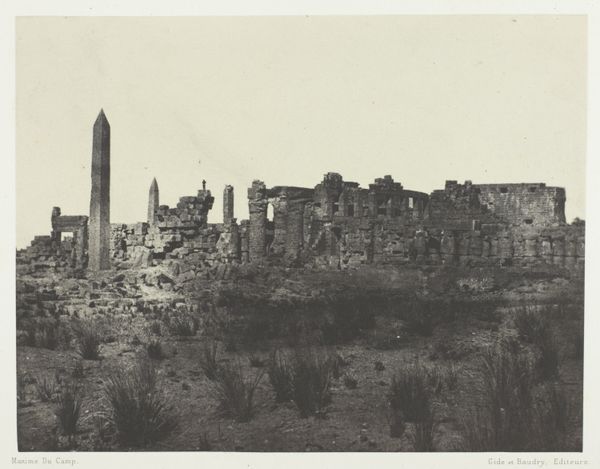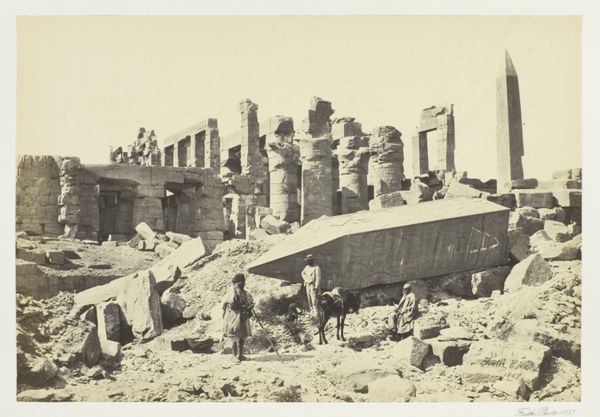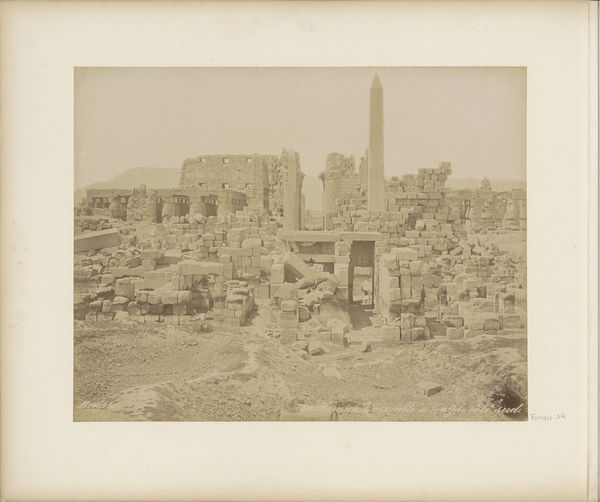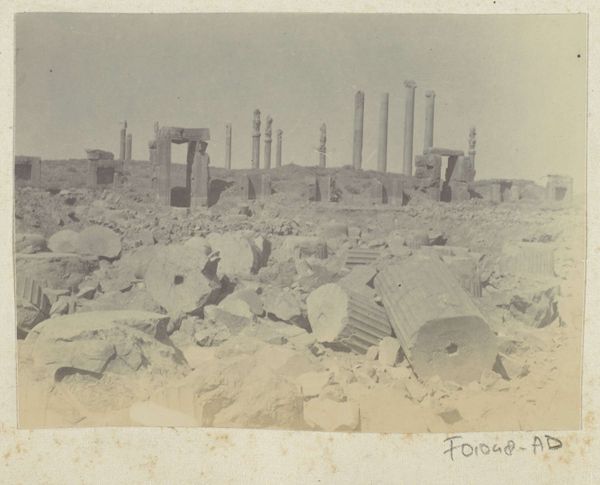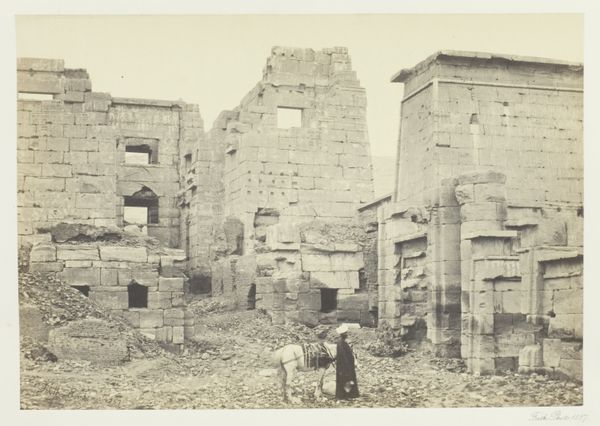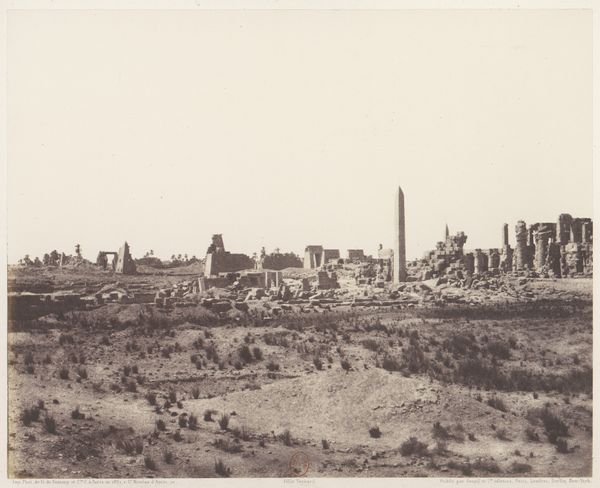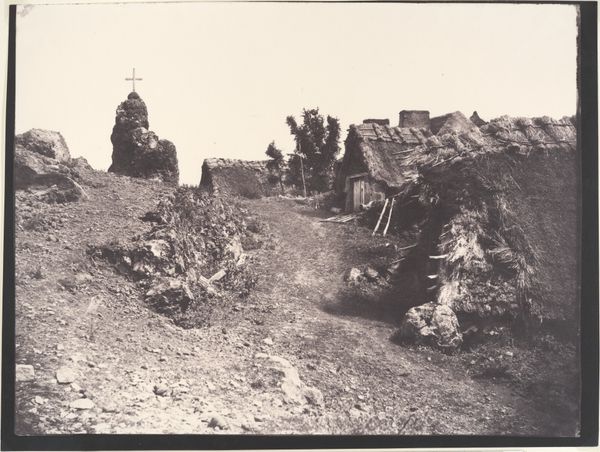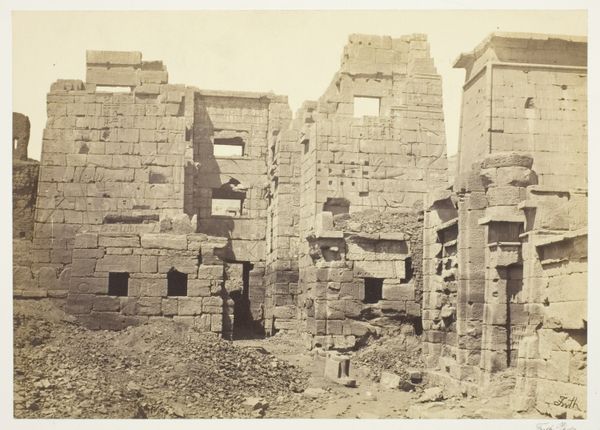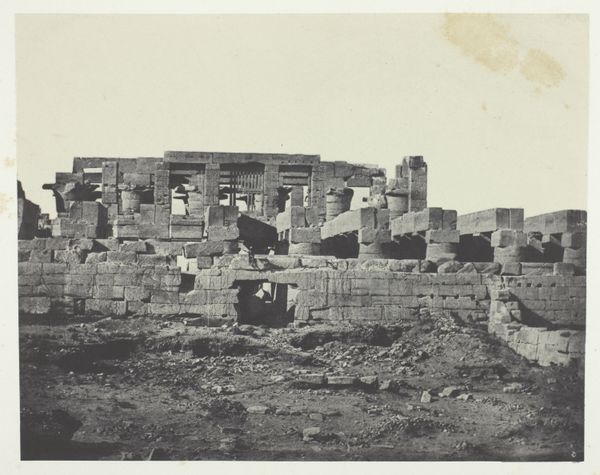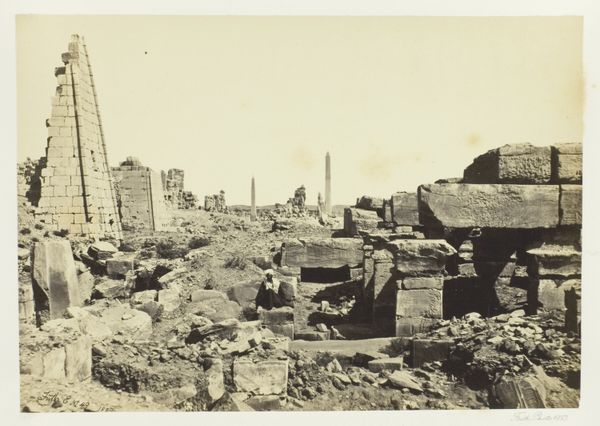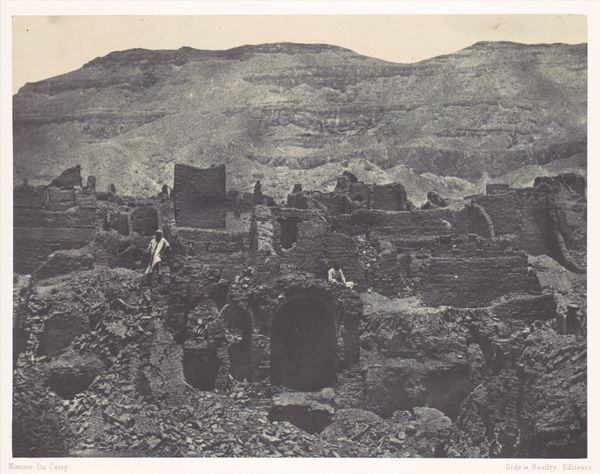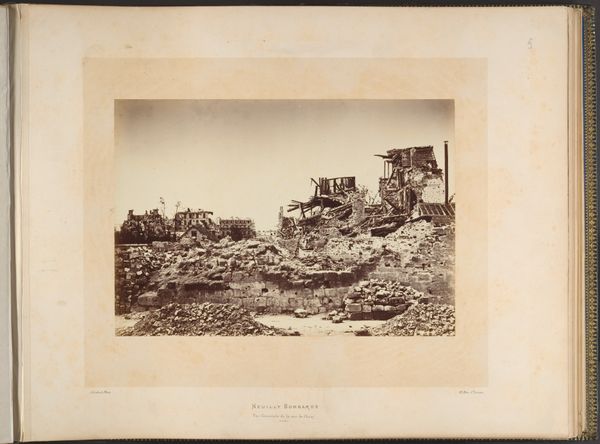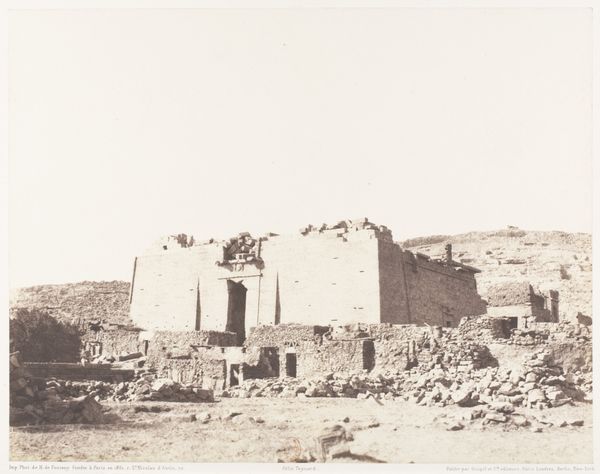
Thebes. Palais de Karnak. Sanctuaire de granit et salle Hypostyle 1850
0:00
0:00
photography, site-specific, gelatin-silver-print
#
landscape
#
ancient-egyptian-art
#
outdoor photo
#
photography
#
ancient-mediterranean
#
site-specific
#
gelatin-silver-print
#
cityscape
Copyright: Public Domain
Maxime Du Camp made this photograph of the temple complex at Karnak in the mid-19th century using the calotype process. This was a moment when Europe was in the grip of Egyptomania. Look at how the image contrasts ruin with monumentality. In this period, photography was being used as a tool of documentation, with the authority of science. But it was also tied up with colonial ambitions. France, where Du Camp was from, had a particular interest in Egypt, and archaeological discoveries fueled cultural fascination. Du Camp was commissioned to make this image by the French government, and it was intended for publication. The image is freighted with a colonial gaze, but it also captures a moment in the history of archaeology and photography. Historians draw on sources from photographic history, the history of archaeology, and postcolonial studies, to understand the complex meanings of an image like this. The social and institutional context in which art is made shapes its meaning and interpretation.
Comments
No comments
Be the first to comment and join the conversation on the ultimate creative platform.
